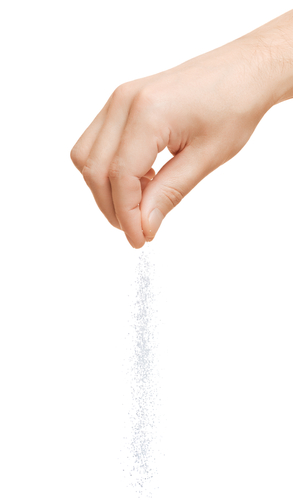How to limit your salt intake?
mis à jour le 11 June 2014 à 22:14Accused of increasing the risk of certain diseases, salt should be used sparingly. Nutritionist Maia Baudelaire explains what the dangers of salt are, and how we can limit our consumption.
What is the right dose?
According to the National Agency for Food Safety, Environment and Labour, the average daily salt intake should be 10g per day for men and 8 g per day for women. In the meanwhile, the WHO (World Health Organization) recommends a maximum consumption of 5g per day, the equivalent of a teaspoon.
What is the difference between visible and hidden salt?
Visible salt is salt that you add yourself on your plate or when you cook. It represents only 10-20% of your total consumption. The rest comes from "hidden" salt, the salt that is naturally present in your food or added during manufacture.
Why should I limit my salt intake?
The entire scientific community agrees that overconsumption of salt could have adverse effects on your health. It increases blood pressure and can promote water retention.
Should we eliminate salt completely?
Absolutely not! Though excess salt is harmful, sodium is essential for the proper functioning of muscles, kidneys and heart, among others. To stay in shape, our body needs at least 4g of salt per day.
What foods should I avoid?
The main sources of salt are all pre-prepared dishes, bread, some cheeses (eg: cheddar), sausages and some carbonated drinks.
Can salt prevent cramps?
When you exercise, the best way to prevent cramps is to hydrate yourself regularly with mineral-rich waters. Choose spring water or mineral water.
How can I reduce my daily salt intake?
- Leave the salt shaker in the kitchen. Always taste your dishes before adding salt.
- Make use of new ingredients to flavour your dishes. Have fun with herbs, spices and mixtures.
- When cooking, why not prepare fresh salads? Cocktail tomatoes, carrot sticks and cucumbers soaked in colourful spiced yogurt sauce? It is good, it is more cooling, and it is less salty than your usual chips.
- Watch the labels and compare salt content of products to choose the less salty ones. Be it salt, sodium chloride or sodium, all three 3 words tell you the same thing. Remember – 1g of sodium = 2.5 g salt.
- When eating out, opt instead for plain water or juice to carbonated drinks.
Maia Baudelaire




